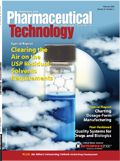Patents "R" Us
Can an overload of patent applications lead to the US' demise as a scientific leader?
I recently attended a press conference sponsored by BIO, the Biotechnology Industry Organization. BIO President and CEO Jim Greenwood called the media together to talk about some proposed changes at the United States Patent and Trademark Office (USPTO). Overwhelmed by the crush of patents coming out of US industry and academia, the patent office is seeking to lighten its workload by, among other things, reducing the number of continuances a petitioner can file. Continuances essentially allow a patent filer to add claims to a patent that's already been filed—effectively broadening the scope of the original patent.

Michelle Hoffman
This procedure is important in biotechnology and drug discovery, where patents are filed when the technology is at a fairly early stage, before the technology's potential has been fully explored. Blocking the number of continuances a drug developer can file forces an inventor to file a new patent for each new application of the technology—a process that, because of its expense, can discourage follow-on inventions, especially for young, poorly capitalized companies, which nevertheless may be extremely innovative.
I have heard from several patent attorneys that the USPTO is considering other changes as well. For example, the office may limit the damages a patent holder can seek from an infringer. The office is also considering granting patents that represent an incremental change, rather than a radical departure, over an existing patent. The attorneys I've spoken with have explained to me that the proposed changes are being supported by the high-tech and software industries, where innovations tend to be incremental and frequent, and where commercialization timelines (and the time to obsolescence) are short.
In contrast, the changes are perceived as inhospitable to the drug-making industry, where innovations are slow in coming and commercialization times run decades, rather than months.
The BIO press conference was held at the JP Morgan Healthcare Investors conference last month. The meeting gives investment bankers, venture capitalists, and Wall Street analysts an opportunity to hear from executives of (mostly) publicly traded companies their projections and expectations for their company's strategic and financial performance over the coming year. For me, it was an opportunity to size up the US pharmaceutical industry and get a glimpse of the trends to look out for in 2008.
It will come as a surprise to no one that globalization continues to be a major theme. Many companies are looking to a growing middle class in developing nations to consume more of their drugs. At the same time, they're taking advantage of the excellent scientific talent and lower wages to set up research and development (R&D) centers in these nations. Take GlaxoSmithKline, for example, which in the words of CEO Jean-Pierre Garnier, has put together a "full-fledged, integrated R&D center in Asia to discover drugs for the world."
Companies are doing more and more of their R&D overseas. And why shouldn't they? In addition to finding outstanding scientific talent in this region at lower wages, companies are also capitalizing on the region's improved patent protections.
So, what does the entire picture reveal? The US is considering weakening its patent protection for novel drugs and discovery tools at a time when the scientific expertise overseas is at its most competitive and sophisticated, and at a time when countries in the developing world are strengthening their patent protections for these discoveries. In sum, it would seem to be a bad time for the USPTO to make such changes. Such a strategic move may very well diminish America's ability to compete on the world stage.
As I mentioned, the rationale for altering the US system is to lighten the burden on the overtaxed patent office. But as Jim Greenwood stated, "If we have an overload of patents coming to the Patent Office, we should celebrate it. Congress should be thinking about how to accommodate and not strangle innovation." We simply can't afford that.























